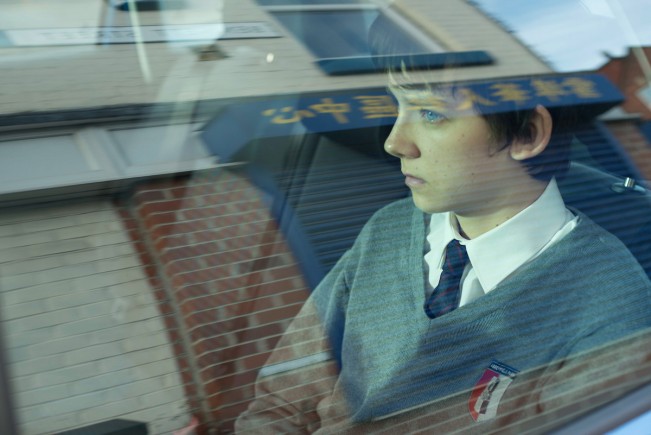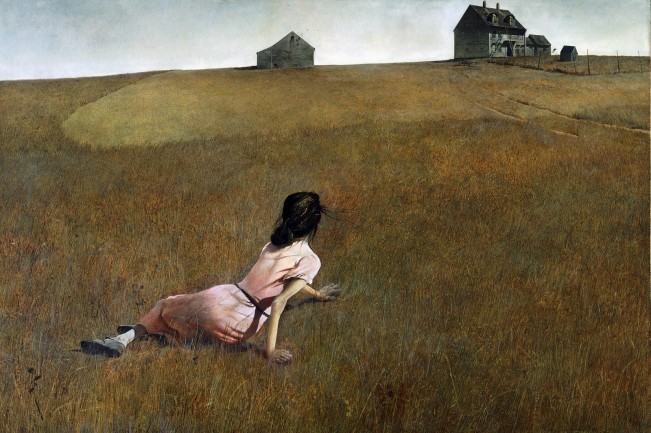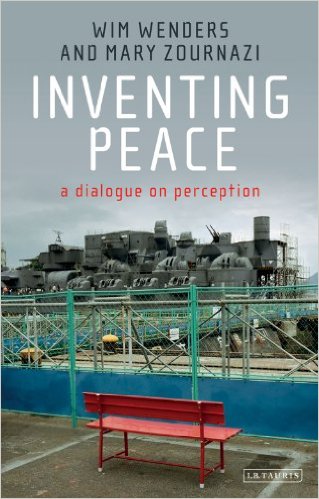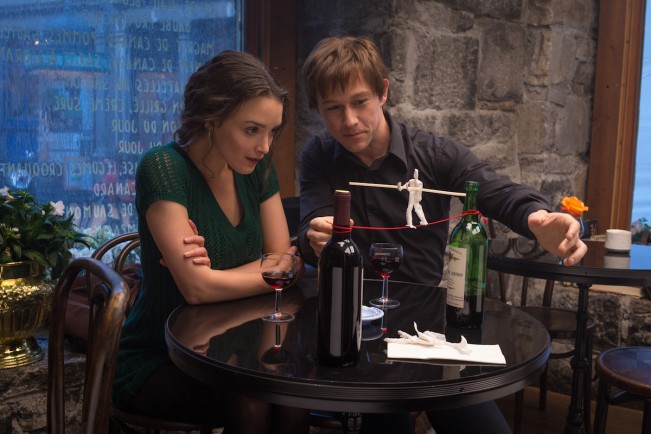

By Ray Pride Pride@moviecitynews.com
Pride’s Friday 5: The Walk, Manglehorn, Results, A Brilliant Young Mind, Wenders On Wyeth
1. The Walk
Climbing the steep, steep stairs to the top of Navy Pier IMAX to see “The Walk” in 3D, I anticipated, nay, hoped for kinetic, gyroscopic, balletic, vertiginous acrophobia, soaring sensation, but dammit, only a few minutes into the movie the sensation that occurred, recurred, resonated until the very end, was only a modest sinking feeling… Maybe if I’d tempered my expectations, I might have had a reaction more akin to the post-NYFF reviews forgiving its insufferable opening 70-80 minutes. [Further disenchantment here.]
2. Manglehorn
 “I’m losin’ hope in tomorrow.” Man, those words murmured by Al Pacino in what may be his finest performances in far too long, they’re bittersweet. David Gordon Green’s quiet character study of a lonely, lovelorn small-town Texas locksmith, Manglehorn, was written by Paul Logan, a childhood friend of Green’s, who was also a driver on Green’s Prince Avalanche. As written by Logan, and with letters to a lover lost decades early, heard in voice-over, partially improvised by Pacino, A. J. Manglehorn’s wistful want for love in his late years holds no less ache than that of Green’s young lovers in All The Real Girls. Manglehorn meets a younger woman (Holly Hunter), a teller at his local bank, and his mood lightens, if not the brood of his long-nurtured wounds. Along with his usual knack for finding privileged moments of behavior, Green also expands on his use of expected, near-surreal images to gratifying effect. (Spontaneous public singing; strange roadside accidents straight out of Godard’s Weekend; earthquakes.) Manglehorn is surprised by nothing, no matter how odd: this becalmed man lives fully in his head and Pacino plays him quietly, a magnificent loser. The great Tim Orr repeats as Green’s cinematographer. And the evocative design tends to bold colors in subdued light, rich yet bruised. As expressed by costume designer Jill Newell, “Lots of dark, melancholy colors and heavy textures, like a child wrapping himself in blankets, layers of protective clothing, as if he was hiding from something. And plenty of dull monochrome colors to work against backgrounds of vibrant colors.” But Pacino is not muffled: his weary embodiment blooms. Especially in a closing scene that begins as satire of acting exercises and culminates in a magical image of simplest poetry. (Then Pacino’s wondrously bemused face.) The bittersweet score is by recurrent Green collaborators Explosions in the Sky and David Wingo. (IFC Films Blu-Ray, $25, October 6.)
“I’m losin’ hope in tomorrow.” Man, those words murmured by Al Pacino in what may be his finest performances in far too long, they’re bittersweet. David Gordon Green’s quiet character study of a lonely, lovelorn small-town Texas locksmith, Manglehorn, was written by Paul Logan, a childhood friend of Green’s, who was also a driver on Green’s Prince Avalanche. As written by Logan, and with letters to a lover lost decades early, heard in voice-over, partially improvised by Pacino, A. J. Manglehorn’s wistful want for love in his late years holds no less ache than that of Green’s young lovers in All The Real Girls. Manglehorn meets a younger woman (Holly Hunter), a teller at his local bank, and his mood lightens, if not the brood of his long-nurtured wounds. Along with his usual knack for finding privileged moments of behavior, Green also expands on his use of expected, near-surreal images to gratifying effect. (Spontaneous public singing; strange roadside accidents straight out of Godard’s Weekend; earthquakes.) Manglehorn is surprised by nothing, no matter how odd: this becalmed man lives fully in his head and Pacino plays him quietly, a magnificent loser. The great Tim Orr repeats as Green’s cinematographer. And the evocative design tends to bold colors in subdued light, rich yet bruised. As expressed by costume designer Jill Newell, “Lots of dark, melancholy colors and heavy textures, like a child wrapping himself in blankets, layers of protective clothing, as if he was hiding from something. And plenty of dull monochrome colors to work against backgrounds of vibrant colors.” But Pacino is not muffled: his weary embodiment blooms. Especially in a closing scene that begins as satire of acting exercises and culminates in a magical image of simplest poetry. (Then Pacino’s wondrously bemused face.) The bittersweet score is by recurrent Green collaborators Explosions in the Sky and David Wingo. (IFC Films Blu-Ray, $25, October 6.)
3. Results
 After the deeply eccentric singularity of Computer Chess, Austin-based screenwriter-director Andrew Bujalski returns to reshaping the relationship comedy with the splendid Results. How could he top that haphazard-seeming, cunningly-constructed bacchanalia of oddity? By returning to the genre he seems born to work in: comedies of miscommunication, dislocation, and money. (Men and women and the shaggy-dog dance.) Newly rich, out-of-shape and whole-heartedly depressed Danny (Kevin Corrigan) happens into an unlikely romantic triangle at the local gym, owned by guru-wannabe Trevor (Guy Pearce), whose passions include trainer Kat (Cobie Smulders), a former flame. Bujalski’s wit remains devilishly dry, and his portrait of three very prickly souls who can monkey up almost any interaction is sly, lovingly structured yet still unswervingly funny. Bujalski’s greatest gift is making stories that appear offhand, even shambling, but are as classically shaped as any being made today. The performances bear their own grace and wit, especially Corrigan, who could not cock a frame wrong if he tried. (Magnolia Films Blu-ray, $30,
After the deeply eccentric singularity of Computer Chess, Austin-based screenwriter-director Andrew Bujalski returns to reshaping the relationship comedy with the splendid Results. How could he top that haphazard-seeming, cunningly-constructed bacchanalia of oddity? By returning to the genre he seems born to work in: comedies of miscommunication, dislocation, and money. (Men and women and the shaggy-dog dance.) Newly rich, out-of-shape and whole-heartedly depressed Danny (Kevin Corrigan) happens into an unlikely romantic triangle at the local gym, owned by guru-wannabe Trevor (Guy Pearce), whose passions include trainer Kat (Cobie Smulders), a former flame. Bujalski’s wit remains devilishly dry, and his portrait of three very prickly souls who can monkey up almost any interaction is sly, lovingly structured yet still unswervingly funny. Bujalski’s greatest gift is making stories that appear offhand, even shambling, but are as classically shaped as any being made today. The performances bear their own grace and wit, especially Corrigan, who could not cock a frame wrong if he tried. (Magnolia Films Blu-ray, $30,
4. A Brilliant Young Mind
 A Brilliant Young Mind is not only warm-hearted, but offers surprises in a symmetrically crafted script, and a handy rebuke to the compounded heart-tugs of another recent tale of genius in the world, The Theory of Everything. (More)
A Brilliant Young Mind is not only warm-hearted, but offers surprises in a symmetrically crafted script, and a handy rebuke to the compounded heart-tugs of another recent tale of genius in the world, The Theory of Everything. (More)
5. Wim Wenders on Andrew Wyeth’s “Christina’s World”
As “Wim Wenders: Portraits Along The Road” (also known as “Wim Wenders” On The Road Again” in some cities) plays across the country, I’ve been re-reading “Inventing Peace: A Dialogue on Perception,” (2013) a dialogue of musings that he co-wrote with Australian philosopher Mary Zournazi. Wenders reflects on photography and painting as well as philosophical notions. From a much longer passage on painting and Andrew Wyeth:
 “His most famous painting (the equivalent of the other icon of the twentieth century, Hopper’s “Nighthawks,” is called “Christina’s World.” You probably know it. A woman sitting in a field, in the foreground, left to center, her back to us, at the bottom of a wide and altogether empty hill, at the top of which stands a simple two-story country house with a barn [at] its side. There is a huge voice and barrenness between the woman and that house. Her hair is slightly blowing in the wind. And you also feel the breeze in the grass that is stretch out in front of her, up to the house. Andrew Wyeth painted nothing but the brown grass for several months. You see each and every blade of grass. The texture of the woman’s dress, her skin, her hair, everything thing is of unbelievable vividness. Although it is painted, it is not static. There is immediacy to the painter’s regard, a freshness that you think you know only from photo snapshots. That woman might turn around in the next second… She looks young and vibrant.
“His most famous painting (the equivalent of the other icon of the twentieth century, Hopper’s “Nighthawks,” is called “Christina’s World.” You probably know it. A woman sitting in a field, in the foreground, left to center, her back to us, at the bottom of a wide and altogether empty hill, at the top of which stands a simple two-story country house with a barn [at] its side. There is a huge voice and barrenness between the woman and that house. Her hair is slightly blowing in the wind. And you also feel the breeze in the grass that is stretch out in front of her, up to the house. Andrew Wyeth painted nothing but the brown grass for several months. You see each and every blade of grass. The texture of the woman’s dress, her skin, her hair, everything thing is of unbelievable vividness. Although it is painted, it is not static. There is immediacy to the painter’s regard, a freshness that you think you know only from photo snapshots. That woman might turn around in the next second… She looks young and vibrant.
 “[Wyeth] has really immersed into her being, has really ‘seen’ her, ‘recognized’ her, has done all he can to depict her in all the glory of her existence. Yes, one can say he glorified her, that he showed her ‘for all eternity’ as who she was and how she was. I’m deeply moved by this effort and the dedication of a painter to bring the existence of one person to light, to convey her being, her essence, her presence to canvases.
“[Wyeth] has really immersed into her being, has really ‘seen’ her, ‘recognized’ her, has done all he can to depict her in all the glory of her existence. Yes, one can say he glorified her, that he showed her ‘for all eternity’ as who she was and how she was. I’m deeply moved by this effort and the dedication of a painter to bring the existence of one person to light, to convey her being, her essence, her presence to canvases.
“The gracefulness of that young figure is stunning. We can only see her from the back… and her face we can only imagine (but we imagine it beautiful) with all the inner beauty that her figure suggests to us. This is a suddenly momentary glimpse Wyeth painted, but yet, the long you watch it, the more timeless the painting becomes, it seems to happen outside of time…
“The ‘Great Peace’ that Marin Buber speaks about, it is all there in this picture, and more than a hints of it. You see the need for it, the yearning for it. That indescribable, tremendous peace, here we can take a look at it.”














